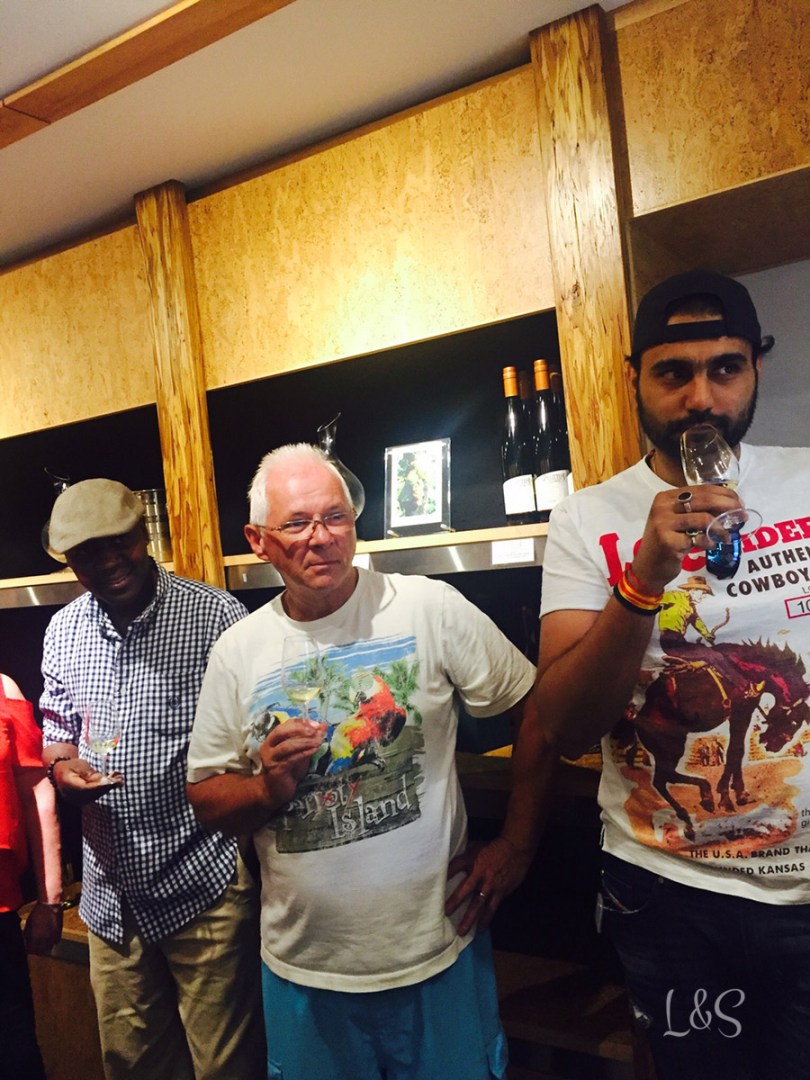Episode 1
There are no special skills needed for wine tasting – just an open mind and your tastebuds. Here are a few tips to help you get the most out of your wine tasting experience.
Look at the colour
Although you might be tempted to immediately take a sip, resist for a moment and look at the wine. Tilt the glass and look at it against a white background or in good light.A white sleeve is s good idea or placing it under a bulb. What do you see? Red wines vary greatly in colour. As they age, you will see hints of reddish-brown around the edges. White wines become more golden as they age. Generally speaking, the darker the wine, the more full-bodied the taste. If the wine is looking hazy, you can immediately get a new bottle opened in any of the places and they would readily do it.
Swirl and sniff
Swirl the wine around the glass (hint: it’s easier if you set it down on a table first). This allows the wine to release its aromas and vapourizes the alcohol. Take a sniff and try to identify what you smell. The nose can detect thousands of flavours and the tongue only four, so much of wine is on the nose.
Taste the wine
Finally. Take a small amount in your mouth, swirl it around and keep it there for a brief period. Sweetness comes from the tip of your tongue, bitterness on the back. Acidity on the side. Is the wine sweet, acidic, crisp? Is it light or full-bodied? How does it finish? Are you still tasting it five, ten or more seconds afterward? Did the taste change as the wine finished? What flavours can you detect?
Focus on the feel
When tasting wines, the feel is the touch of the wine on your tongue. Is it rich and full? Lean and light? Are there bubbles? Does it tingle at the edges of your tongue? Tannins, for example, will feel dry on your tongue, like biting into a grape seed or drinking very strong tea.
Spit it out
It’s okay to spit. In fact, you’ll be better able to taste more wines that way. Wineries will provide a bucket (usually located on the tasting counter) for just that purpose.
Compare notes with your friends
Having trouble putting your finger on what flavours you’re tasting? Ask the tasting room staff to describe the wine for you and see if you can match their description to what is floating around in your head. Sometimes it will. Sometimes it won’t. Wine tasting is a very personal experience – there are no wrong answers but it’s fun to compare notes with other people.
Dump it out
It’s not necessary to finish your entire sample. When you’ve tasted enough, it’s perfectly okay to pour it out into the spit bucket. It’s not a sign you didn’t enjoy what you were poured. It’s a sign you’re ready to move on to your next sample.
Cleanse your palate
Eat crackers or plain white bread between tastings. They’ll clear your palate and allow you to taste your next wine with more clarity. Too many samples without a cleanse will overwhelm your palate.
So this is going to be followed by the wine tasting tour,which I thoroughly enjoyed the previous day, at one of the biggest wine selling and wine making brands, their vineyard tour and the manufacturing unit, the Pillitteri Estate winery, at Niagara on the lake,where I had an amazing experience.
Outfit details:
Female-
Male-
T-shirt : Lee
Jeans: Diesel
Shoes: Nike
Widget not in any sidebars








 Leather has been making the rounds on fashion runways across the world this year. Read more...
Leather has been making the rounds on fashion runways across the world this year. Read more... 








Wow what an amazing article – very informative and rendered a new approach to wine tasting.
For a wine lover, I was able to appreciate the nuances while keeping the interest going with such a tasty article.
Thanks a higher it feels gud